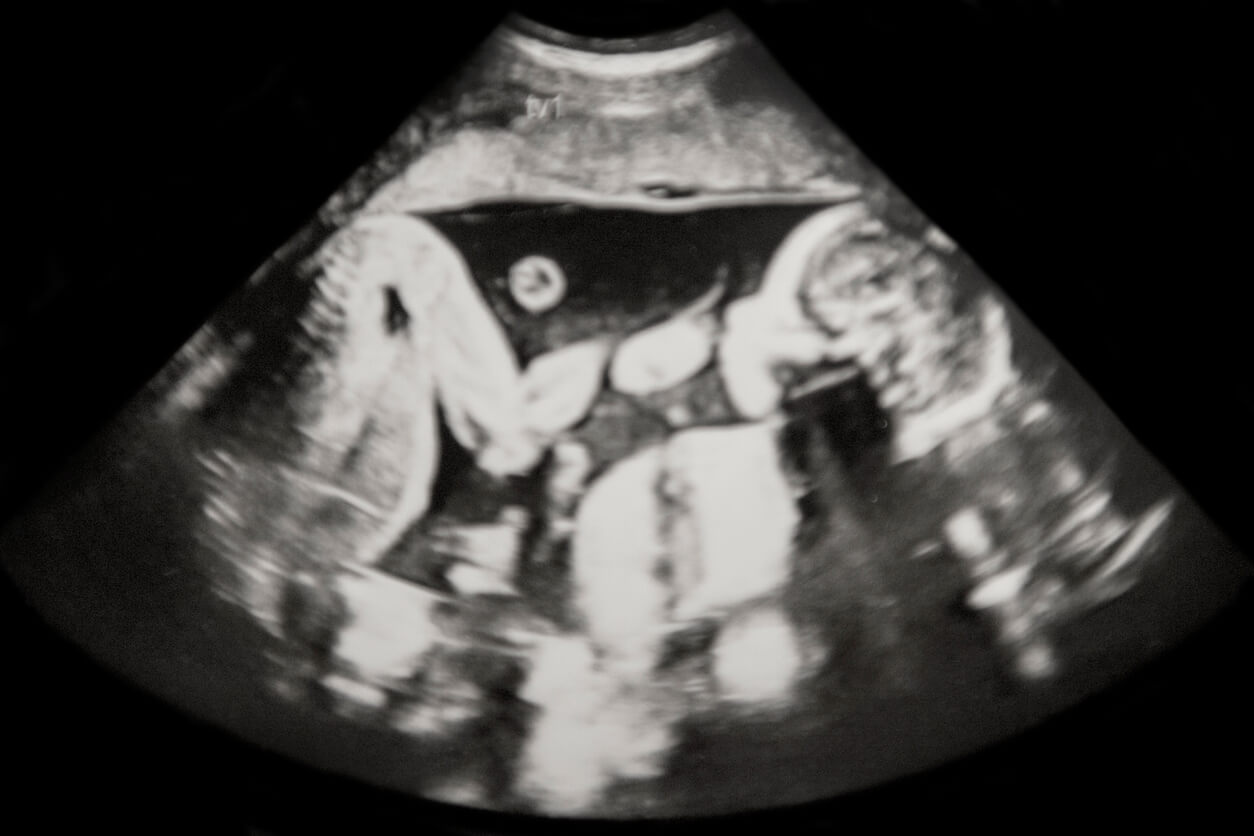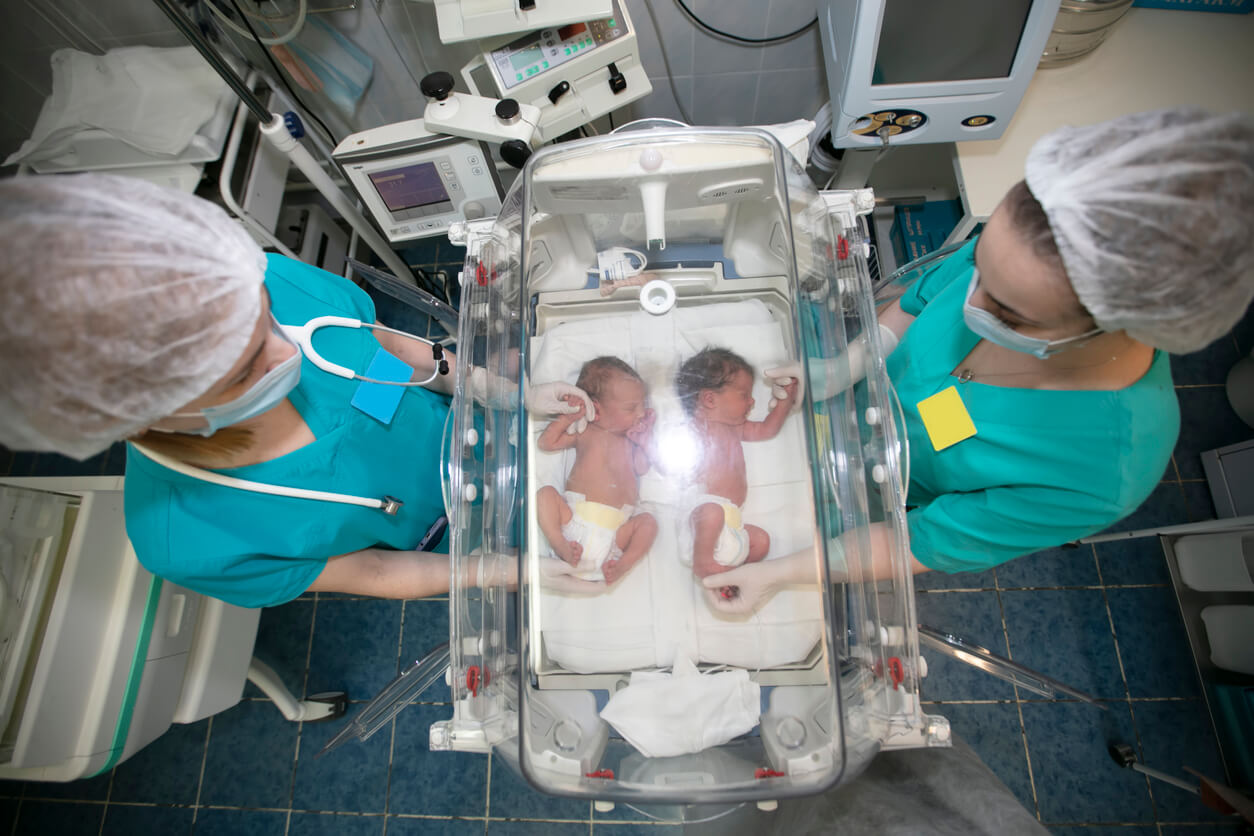Possible Complications in a Multiple Pregnancy

Pregnancy is one of the most exciting times in a woman’s life. Likewise, a multiple pregnancy, with the presence of 2 or more fetuses, is no exception. However, it’s crucial for the mother to be aware of the risks and possible complications that can occur in a multiple pregnancy, both for her and for her babies.
According to the American Society for Reproductive Medicine, the most frequent gestational complications of twin pregnancies are premature delivery (up to 50% of cases) and hypertensive disorders, which are three to five times more frequent than in single pregnancies.
Here we’ll tell you all about it. Don’t miss it!
Why do multiple pregnancies occur?
Multiple pregnancies occur for different reasons, but some of the most frequent are the following:
- Heredity.
- Advanced age of the mother. They occur especially in women over 30 years of age.
- Having had more than 2 previous pregnancies.
- African or Western ethnicity.
- The intake of ovulation-stimulating drugs. Mainly clomiphene citrate and gonadotropins, such as FSH.
- Conception by in vitro fertilization techniques (IVF).
Among these factors, the only ones that are modifiable are the intake of drugs to induce ovulation and the control of the number of embryos transferred to the uterus in IVF.
Types of multiple pregnancy
An ultrasound is used to determine the type of twin pregnancy and there are two alternatives:
- Dizygotic: This is the case of fraternal or “non-identical” twins. It occurs because two different eggs have been fertilized by two different sperm, but at the same time. Thus, the siblings grow in separate amniotic sacs and each has its own placenta. In this case, the twins may or may not be of the same sex.
- Monozygotic: These are identical twins, both physically and genetically. This phenomenon occurs by the division of the already fertilized egg into two or more identical cells. Depending on the type of division, the twins may share only the amniotic sac or also the placenta. As they contain the same DNA, they’re always of the same sex.

Complications for the mother in a multiple pregnancy
In all pregnancies, there can be health inconveniences, however, in the case of multiple gestations, the risk is even greater. The following are the complications most frequently suffered by mothers in multifetal pregnancies.
Minor complications
- Pain and constipation. The uterus enlarges and may cause nocturia (increased frequency of nighttime urination), constipation, and back and abdominal pain, especially in the lower back.
- Difficulty walking. Shortness of breath or increased fatigue may occur during exercise because the pressure inside the abdomen increases and the diaphragm rises. This creates shallower breaths and limits oxygenation of the lungs.
- Postpartum depression. Although this problem isn’t always talked about in new mothers, postpartum depression affects 25% of postpartum women and can have negative consequences for both the baby and the couple. It’s a condition that should be managed with therapy as soon as it’s detected.
The aforementioned discomforts don’t usually put the life of the mother or the baby at risk; however, they’re frequent, to be expected, and can alter the well-being of the couple. A physician should accompany and help alleviate the symptoms, whenever possible.
Major complications
- Hypertensive disorders (such as gestational hypertension, preeclampsia, and eclampsia): Preeclampsia is diagnosed with blood pressures greater than 140/90 mm Hg after 20 weeks, together with proteinuria, low platelet count, increased liver enzymes, pulmonary edema, headaches that don’t improve with analgesics, or visual disturbances. In the case of eclampsia, seizures are added and the risk to the health of the mother and baby is high.
- Gestational diabetes: The mother’s body adapts to pregnancy and modifies its metabolism to nourish the baby through the placenta. For this reason, there’s greater retention of liquid and fat deposits, which translates into weight gain and an increase in maternal blood glucose levels. However, when this parameter’s outside the expected limits, transient diabetes, such as gestational diabetes, may be diagnosed.
- Prenatal hemorrhage: This is generally associated with preeclampsia and increases the risk of placental abruption and fetal loss or premature delivery.
- Anemia: Many single pregnancies are accompanied by a certain degree of anemia, but studies have shown that in multiple pregnancies, this complication is more frequent.
- The need for cesarean section: More than 50% of multiple pregnancies end in C-section, which increases maternal morbidity and mortality. There are also complications associated with surgery, such as venous thrombosis and embolism.
- Postpartum hemorrhage: The presence of a larger than usual placenta, an over-distended uterus, and a greater tendency toward atony of its muscles increase the risk of hemorrhage after birth.
Complications for babies in a multiple pregnancy

Above, we saw the complications that the mother may suffer in multiple pregnancy. Logically, babies aren’t exempt from risks, and below, we’ll mention some of the common difficulties they experience:
- Prematurity: Babies born at 37 weeks or earlier are considered premature. These children usually present low birth weight and certain complications associated with immaturity, such as gastrointestinal, motor and pulmonary disorders, among others.
- Genetic defects: As part of the follow-up in twin pregnancies, the NICE Guidelines recommend screening for Down syndrome, Edwards’ syndrome, and Patau’s syndrome.
- Vanishing twin syndrome: This is a phenomenon in which one or more twins disappear during gestation. It usually occurs in the first trimester of pregnancy and is diagnosed by ultrasound. The fetus that remains alive generally has a good prognosis, but in some cases, may have uterine growth restriction, premature delivery, cerebral palsy, or other genetic abnormalities.
- Feto-fetal transfusion syndrome: Twins who share a placenta may also share blood vessels, which generates a situation in which one of the twins receives more and better nutrients than the other. Therefore, one grows less and the other receives an overload of blood.
- An excessive increase in amniotic fluid (polyhydramnios ): Increased amniotic fluid can trigger premature contractions or promote premature rupture of membranes and early birth. It has also been associated with fetal malposition, umbilical cord prolapse, and postnatal uterine atony.
- Wrapping of the umbilical cord: Because there’s limited space for the development of the babies, it’s more likely that the umbilical cord will wrap around the neck of one of the little ones. The problem with this is that it may tighten, either during pregnancy or at the time of delivery, and lead to perinatal hypoxia.
Complications in a multiple pregnancy are manageable
We must keep in mind that, although there’s an increased risk of suffering complications in a multiple pregnancy, there are treatments to improve the health status of the mother and her babies. Therefore, the most important and recommended thing to do is to continuously monitor the pregnancy with the obstetrician-gynecologist.
We must remember that the babies are in a symbiotic relationship with the mother. Therefore, it’s important to have a healthy diet, good physical and mental health, and to have the appropriate prenatal counseling, in order to reach birth in the best way possible.
All cited sources were thoroughly reviewed by our team to ensure their quality, reliability, currency, and validity. The bibliography of this article was considered reliable and of academic or scientific accuracy.
- American Society for Reproductive Medicine. Patient´s Fact Sheet: Complicaciones de la Gestación Múltiple. Alabama. 2002.
- Moldenhauer J. Embarazo Multifetal. MSD Manuals. [Última actualización: jul 2021; última revisión: 21 de Julio de 2022]. Disponible en: www.msdmanuals.com/es/profesional/ginecología-y-obstetricia/anomal%C3%ADas-y-complicaciones-del-trabajo-de-parto-y-el-parto/embarazo-multifetal
- Acuna A et al. Depresiòn postparto. Revista Médica Sinergia. 2021; 6(9). ISSN: 2215-4523 / e-ISSN: 2215-5279
- John Hopkins Medicine. Complications of Multiple Pregnancy. [última actualización: 2022; última revisión: 20 de Julio de 2022]. Disponible en: Hopkinsmedicine.com/health/conditions-and-diseases/staying-healthy-during-pregnancy/complications-of-multiple-pregnancy
- Stanford Childre’s Health. Overview of Múltiple Pregnancy. [última actualización: 2022 ; última revisión: 20 de Julio de 2022]. Disponible en: www. Stanfordchildrens.org/en/topic/default?id=overview-of-multiple-pregnancy-85-P08019
- Campbell D. A review of Maternal Complications of Multiple Pregnancy. Twin Research. 2001; 4(3): 146-9. DOI: 10.1375/twin.4.3.146
- Mayoclinic.org. Preclampsia. Mayo Clinic. [Última actualización: Jun 2022; última revisión: 21 de Julio de 2022]. Disponible en: www.mayoclinic.org/es-es/diseases-conditions/preeclampsia/diagnosis-tretament/drc-20355751#:¬:text=Se%20diagnostica%20preclampsia%20si%20tienes,Bajo%20recuento%20de%20plaquetas
- Zamani Z, Parekh U. Vanishing Twin Syndrome. Treasure Island (FL): StatPearls [Internet]. 2021. PMID: 33085367
- NICE guideline. Twin and triplet pregnancy. National Institute for Health and Care Excellence. 2019. Disponible en: www.nice.org.uk/guidance/ng137
- Dulay A.T. Polihidramios. Manual MSD. [Última actualización: oct 2020; última revisión: 21 de Julio de 2022]. Disponible en: www.msdmanuals.com/es/profesional/ginecología-y-obstetricia/anomal%C3%ADas-del-embarazo/polihidramios
This text is provided for informational purposes only and does not replace consultation with a professional. If in doubt, consult your specialist.








